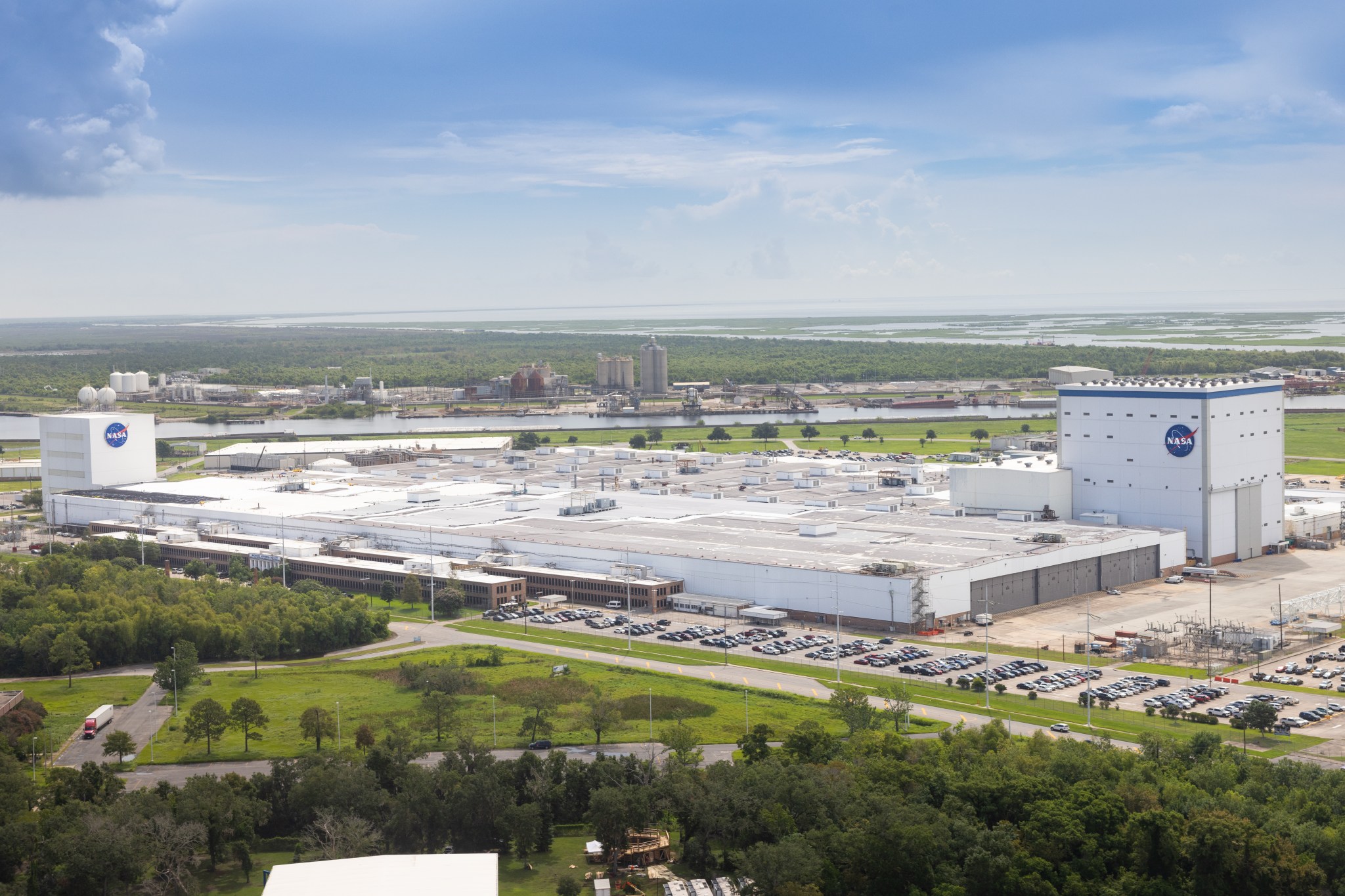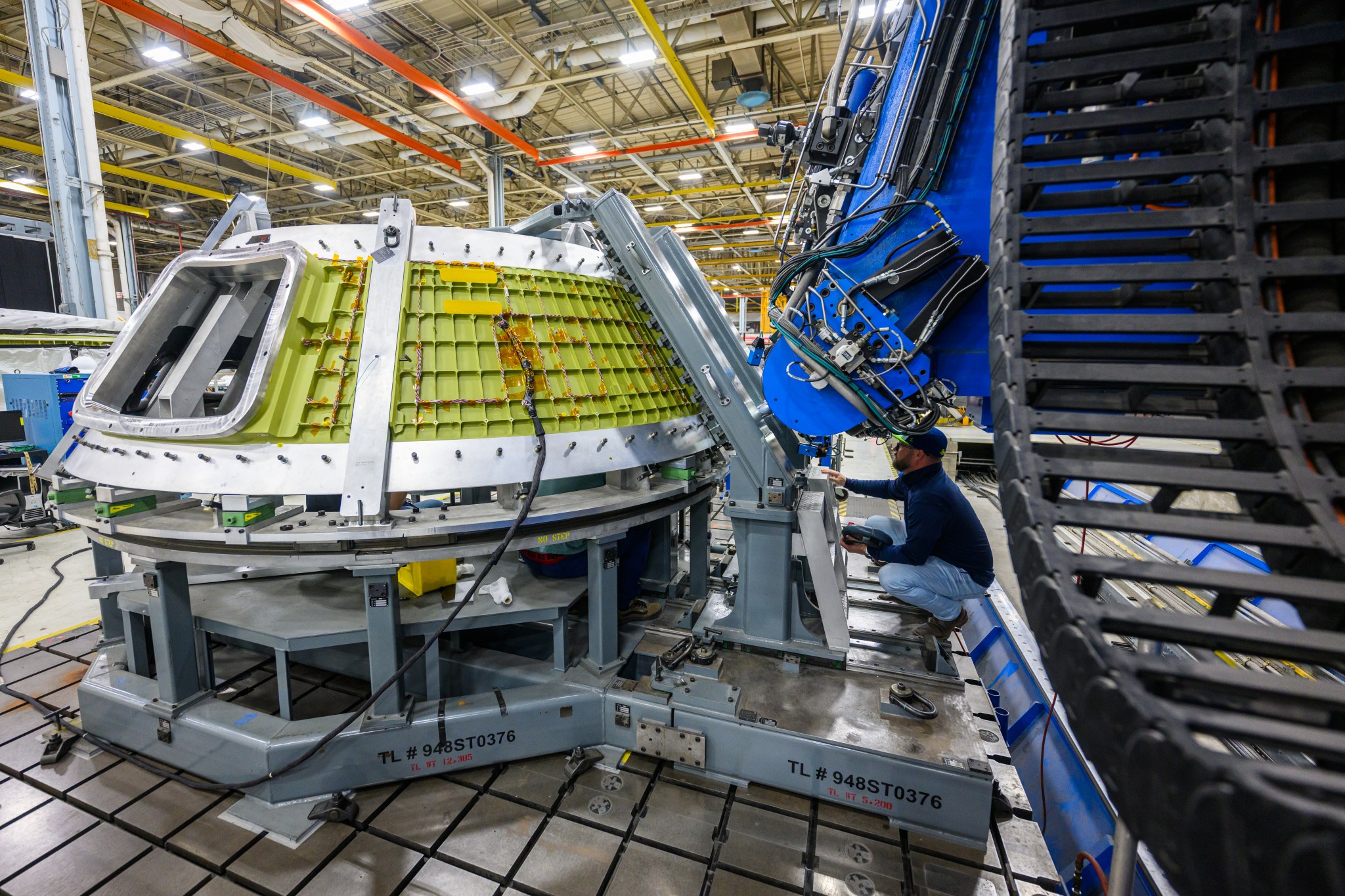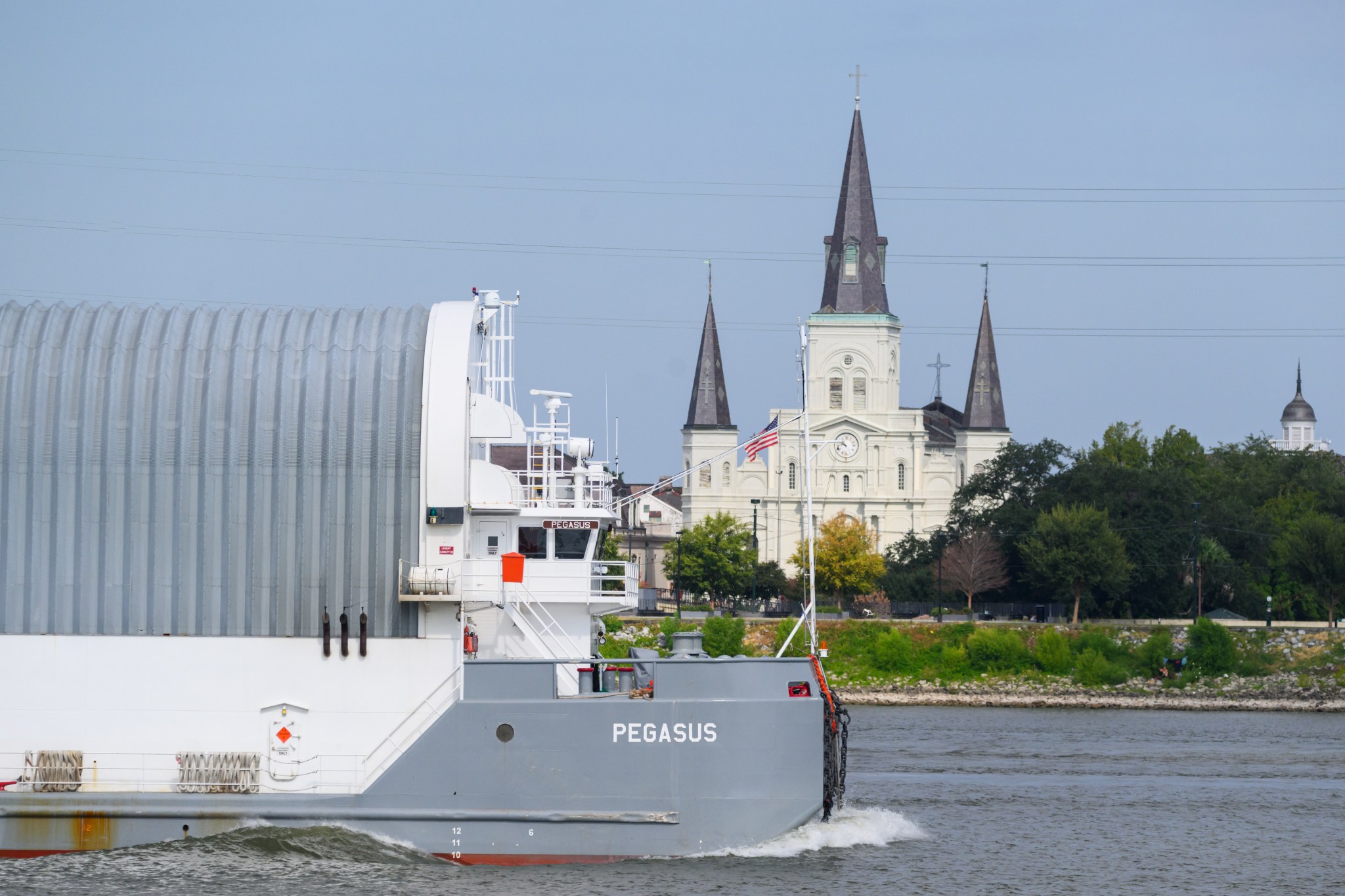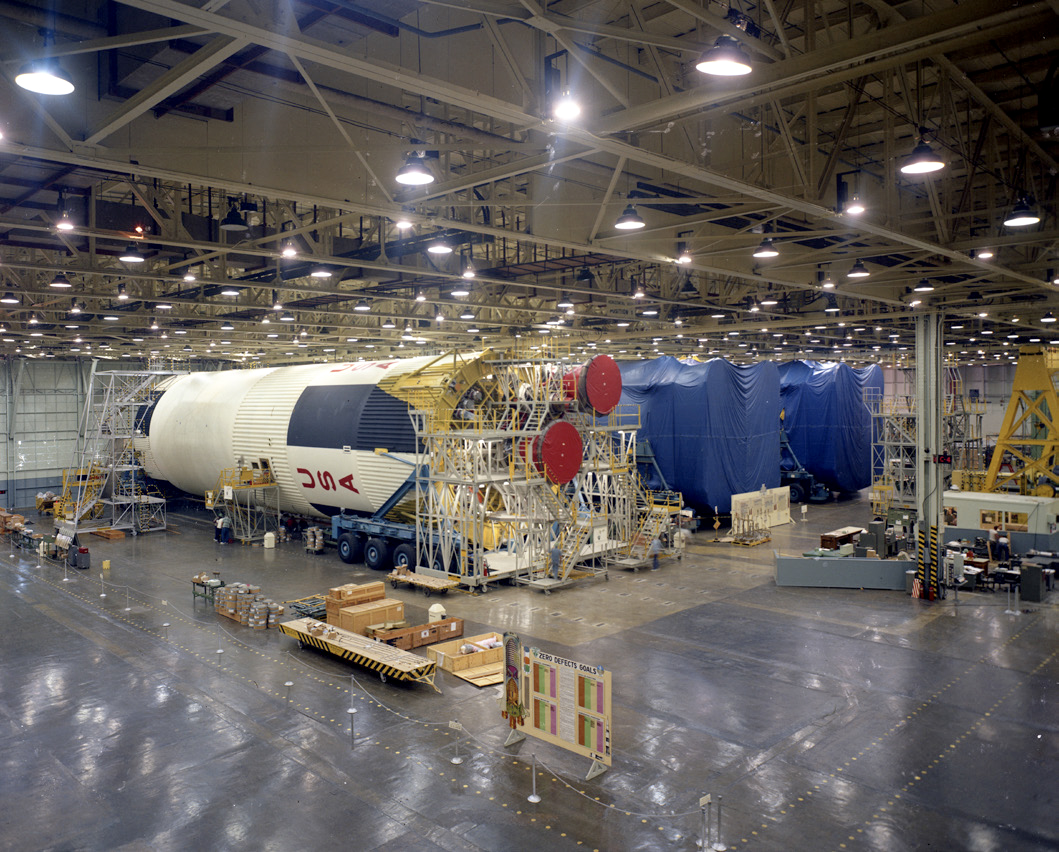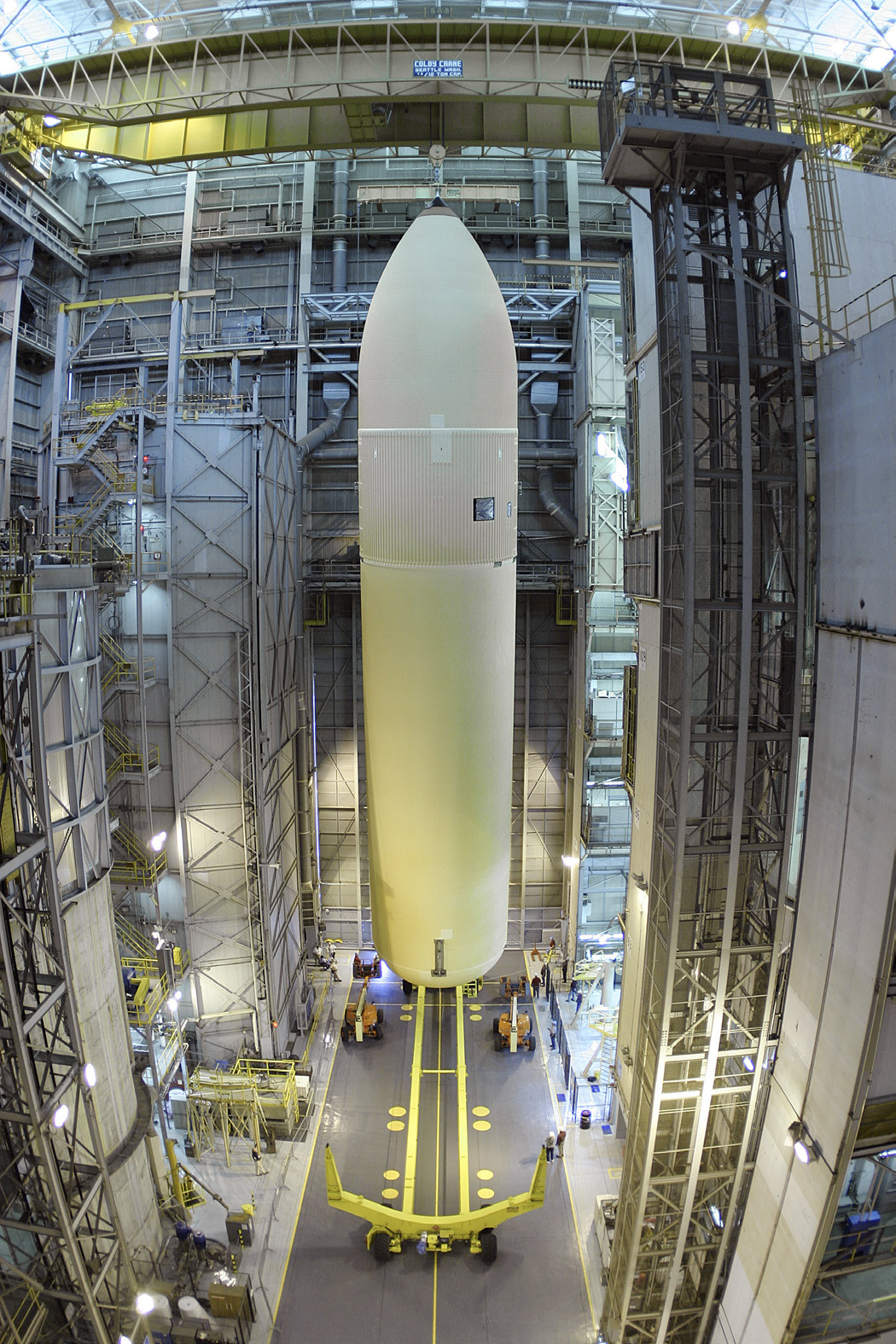‘America’s Rocket Factory’ Builds Future in Space
A Brief History
Michoud’s history dates back to the 1700s when it was part of a French Royal land grant and later became the site of a sugar cane plantation and refinery operated by Antoine Michoud. The U.S. government purchased the land in 1940 and built a production facility to manufacture cargo aircraft in support of WWII, and later, tank engines during the Korean War. NASA later acquired the facility in 1961.
For more than 60 years, NASA’s Michoud Assembly Facility in New Orleans,
Louisiana, has been “America’s rocket factory,” the nation’s premiere site for manufacturing and assembly of large-scale space structures and systems. The government-owned manufacturing facility is one of the largest in the world, with 43 acres of manufacturing space under one roof—a space large enough to contain more than 31 professional football fields. Michoud is managed by NASA’s Marshall Space Flight Center in Huntsville, Alabama, with several areas of the facility used by commercial firms or NASA contractors.
Michoud Today
Michoud is manufacturing and assembling the largest rocket stage NASA has ever constructed: the Space Launch System (SLS) core stage—the world’s most capable rocket that will send the Orion spacecraft, astronauts, and supplies on bold exploration missions to the Moon and beyond.

Michoud workers, led by prime contractor The Boeing Co., headquartered in Chicago, Illinois, are building the SLS core stage, the largest part of the 322-foot-tall rocket, for all of the SLS rockets. Towering at 212 feet tall with a diameter of 27.6 feet, the SLS core stage stores 733,000 gallons of super-cooled liquid hydrogen and liquid oxygen to fuel the four RS-25 engines that power the rocket. L3Harris Technologies company builds the RS-25 engines in Canoga Park, California.
Michoud’s state-of-the-art manufacturing and welding equipment—including a friction-stir welding tool that is the largest of its kind in the world—make it possible to build several core stages simultaneously. Each core stage’s major structures are built with the large welding machines, then outfitted with avionics, thermal protection systems, propulsion systems and other internal hardware. Finally, the structures are assembled and shipped to Kennedy Space Center in Florida for final integration. During launch, four RS-25 engines produce more than 2 million lbs. of thrust.
Orion’s large structures and composites are being manufactured at Michoud by prime contractor Lockheed Martin of Bethesda, Maryland. These structures include the Orion crew module pressure vessel, the underlying framework of the capsule, designed to ensure a sealed life support environment for the crew. After welding is completed at Michoud, the crew module pressure vessel is shipped to Kennedy for final assembly and integration with other spacecraft elements including the European Service Module, which will provide Orion with power and propulsion, and the launch abort system.
Fabrication and development of Orion’s launch abort system is also underway at Michoud by Lockheed Martin. This system is positioned on a tower atop the crew module and can activate within milliseconds to propel the vehicle to safety in case of an emergency at the launch pad or during ascent and can position the crew module for a safe landing in the ocean. The launch abort system is also shipped to Kennedy for final assembly and integration with the spacecraft after fabrication at Michoud.
When NASA’s Artemis I mission successfully launched on November 16, 2022, and subsequently splashed down on December 11, 2022, it was the core stage and Orion spacecraft – both built at Michoud – which flew on that first lunar test flight.
The core stage for Artemis II has been delivered to Kennedy where it is being prepared for integration with additional SLS components and the Orion spacecraft. SLS will provide the power to send astronauts aboard the Orion spacecraft nearly 240,000 miles from Earth before Orion’s main engine propels the crew an additional 4,600 miles beyond the far side of the Moon. At Michoud, teams are simultaneously constructing the core stages for three more SLS rockets. Michoud’s large manufacturing space, along with advanced tooling and equipment, has enabled construction of the first hardware for the Exploration Upper Stage (EUS), a more powerful upper stage that will be used with the evolved Block 1B configuration of the SLS rocket. The EUS will provide the power to send larger and heavier payloads to the Moon and Mars.
Teams at Michoud have also delivered the Orion crew module pressure vessels for Artemis II, III and IV to Kennedy, and are currently welding the pressure vessel for Artemis V. The Orion launch abort system for Artemis II has been delivered to Kennedy and the Artemis III and IV launch abort systems are currently being manufactured at Michoud.
To help realize these next-generation spacecrafts, Michoud is building on its long legacy of successful fabrication and manufacturing of large, complex hardware for NASA flight programs. During the Apollo Program in the 1960s, workers at Michoud built the first stages of the Saturn IB and Saturn V rockets, which took America’s astronauts first to low-Earth orbit and then on to the Moon. In the decades after Apollo, Michoud was home to manufacturing of the 15-story-tall external tanks, the largest space shuttle elements, which carried the fuel for 135 shuttle flights from 1981-2011. Experience and expertise gained while building the Saturn stages and the space shuttle external tanks benefit SLS core stage development and manufacturing.
Facilities and Capabilities
Situated on 829 acres of land, the Michoud Assembly Facility features more than 2 million square feet of manufacturing space in its climate-controlled rocket factory, additional office and manufacturing space throughout the campus, and ample green space for expansion. The rocket factory includes numerous open high-bay areas, an extensive overhead crane network and the 45,000-square-foot Vertical Assembly Center, the world’s largest robotic tool for building rockets, for the integration and stacking of large-scale structures. Its list of state-of-the-art manufacturing capabilities includes friction stir welding, non-destructive evaluation, high-gantry machining centers, 40,000-square-foot machine shop, build to print part/component fabrication, component processing facility and much more.
The facility also has interstate highway access, and a deepwater port on the Intracoastal Waterway connecting Michoud to the Mississippi River and Gulf of Mexico for transportation of manufactured space hardware. NASA’s barge Pegasus, maintained at Michoud, has been modified to transport large SLS elements such as the core stage—the largest piece of hardware NASA has ever moved by barge.
Situated on 829 acres of land, the Michoud Assembly Facility features more than 2 million square feet of manufacturing space, and more than 300 acres of green space for expansion. The site includes numerous open, high-bay areas, an extensive overhead crane network and the 45,000-square-foot Vertical Assembly Center, the world’s largest robotic tool for building rockets, for the integration and stacking of large-scale structures. Its list of state-of-the-art manufacturing capabilities includes friction stir welding, non-destructive evaluation, high-gantry machining centers, 40,000-square-foot machine shop, build to print part/component fabrication, component processing facility and much more.
Michoud’s location allows the agency and its tenants to take advantage of leading-edge manufacturing, welding, fabrication and material evaluation techniques developed by NASA and its academic and industry partners. Michoud is a multi-tenant community, an example of successfully operating large, government-owned facilities by sharing space with other government and commercial tenants. Since the space shuttle era, the facility has seen a significant reduction in operating costs because of its unique multi-tenant model.
Approximately 3,000 people are employed on-site, including government civil-service workers, contractor employees and tenants. Michoud’s tenants include aerospace contractors, other government agencies and commercial firms. The National Center for Advanced Manufacturing—a partnership among NASA, the state of Louisiana, Louisiana State University in Baton Rouge and the University of New Orleans—also calls Michoud home.
For more information about Michoud and its role in the nation’s space program, visit:
https://www.nasa.gov/michoud-assembly-facility/
For more information about NASA’s Space Launch System, visit:
https://www.nasa.gov/sls
For more information about NASA’s Orion Spacecraft, visit:
https://www.nasa.gov/exploration/systems/orion/index.html


























